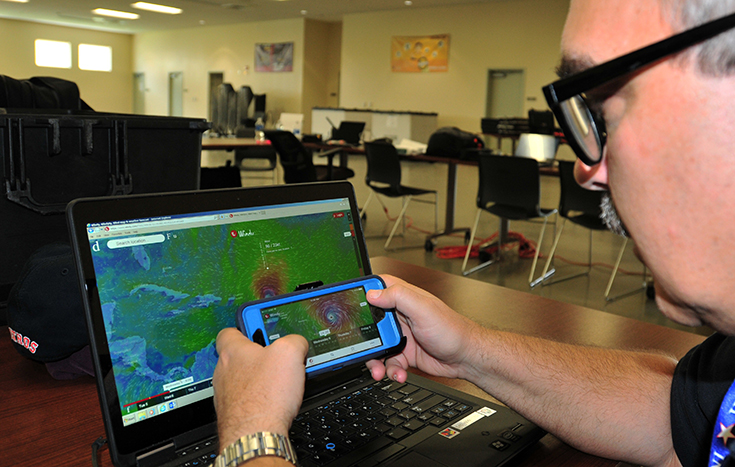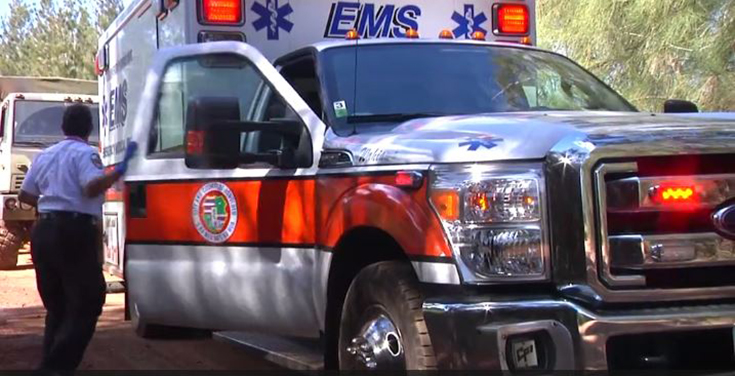US states sign up to first nationwide broadband network for public safety
The First Responder Network Authority grew out of a 9/11 Commission recommendation calling for interoperable communications for all US first responders, writes Aislynn C Turner

Governors from more than a dozen states and territories have, in recent weeks, agreed to participate in the United States’ first nationwide broadband network for public safety in their states. This allows FirstNet and its partner AT&T to build the Radio Access Network (RAN) in their state for the long-term benefit of public safety.
New Jersey cited support for large events and connectivity during disasters, such as seasonal hurricanes that have affected the state, as reasons behind its decision to opt in to FirstNet. “Opting in to FirstNet underscores New Jersey’s commitment to ensuring first responders are capable of meeting constantly evolving challenges,” said Jared Maples, Acting Director of the New Jersey Office of Homeland Security and Preparedness. “As one of the first states to opt in, New Jersey continues to be a national leader of public safety technology innovation.”
As of September 5, 21 US states and two territories have opted in to the network. A diverse cross-section of the country, the opt-ins underline FirstNet’s work with the public safety community over the past three years to deliver customised state plans.
Public safety agencies in predominantly rural states have been especially interested in tapping into the network, which promises to expand coverage in those areas where it is difficult to acquire or maintain a commercial cell signal – in remote areas, mountains, island communities, deep woods or even desolate frontier wilderness.
“Much of Michigan is rural and this presents many communication challenges,” said Michigan State Police Director, Col. Kriste Kibbey Etue. “Effective and robust communication capabilities are critical to all public safety officials and the citizens we serve.”
In New Mexico, Department of Public Safety Cabinet Secretary Scott Weaver commented: “This is a great step in making our communities safer. I spent years as a State Police officer driving around New Mexico in a squad car – in and out of every community in the state. I know first hand just how exciting this improvement is for our men and women who put on the uniform.”
The First Responder Network Authority grew out of a 9/11 Commission recommendation calling for interoperable communications for all US first responders. In March, FirstNet partnered with AT&T to build and operate the network. The contract will serve as a formal lever to hold AT&T responsible for delivering the network and associated services to public safety stakeholders. AT&T is investing $40 billion over the 25-year life of the contract.
FirstNet will be a vital component for everyday response as well as natural disasters and terrorist incidents. It will:
-
Connect first responders to critical information via a secure network;
-
Improve efficiency in public safety;
-
Enhance network coverage in rural and tribal areas;
-
Provide first responders with access to dedicated network deployable resources for additional coverage and support when needed;
-
Drive infrastructure investments across states and territories to create jobs; and
-
Usher in a new wave of innovation that first responders can depend on creating an ever-evolving set of life-saving tools for public safety, including public safety apps, specialized devices and Internet of Things technologies.
It also carries the potential for future integration with next generation 9-1-1 networks and Smart Cities’ infrastructure.
FirstNet devices and applications will ultimately change the way local, state, federal and tribal public safety agencies operate. The FirstNet Labs in Boulder, Col.,will test public safety functionality and features of devices and apps on the FirstNet network. Some of the network benefits include:
-
Quality of service and guaranteed priority immediately for opt-in states, at no extra cost;
-
Preemption by the end of 2017 for opt-in states on all LTE bands for full network access during emergencies;
-
A 24-hour, 365-day customer service help desk for public safety;
-
End-to-end encryption;
-
A 24/7 FirstNet security operations centre; and
-
A device and application ecosystem to enable access to the newest equipment, accessories and apps at reasonable prices.
FirstNet launched its State Plan Portal and delivered customized state plans to states and territories in June. These State Plans outline how the network will be built in the 56 US states and territories. Each plan is based upon the feedback that FirstNet received from the public safety community through lengthy consultations and outreach.

Once a state opts-in, AT&T will immediately offer guaranteed priority service over its existing network – a full two years ahead of schedule – helping to speed delivery of services and keep costs low for public safety. Importantly, each individual agency has the option to go with FirstNet or another carrier as its network provider, even for opt-in states.
As public safety agencies adopt the network, FirstNet will continue to advocate for and consult with them to ensure their needs and expectations are built into the network and will use the input gathered from ongoing engagements to drive enhancements and upgrades to the network.
FirstNet has relied upon emergency managers as a guiding force in network planning to ensure the network meets their needs. Chicago’s director of Emergency Management, Alicia Tate-Nadeau, said FirstNet’s ability to prioritise broadband for public safety and pre-empt commercial users during high-volume times is critical for first responders to communicate in an emergency.
“We are blowing up the airwaves, and it’s critical that first responders and the emergency management community have the ability to have priority on these,” she said. “Whenever something happens, the safety of our citizens is our number one concern.”
Joseph Sastre, director of Emergency Management in Groton, Conn, added: “We have a lot of projects we would like to do, but can’t without FirstNet’s prioritized broadband to allow for emerging technologies over a unified system.”
For example, Sastre said he would like to connect multiple points – a Navy base, a nuclear power plant and a commercial port, among others – by video that can be seen by 911 dispatchers. “Having something like FirstNet, we could pool all of this so that our 911 centre has the ability to see what’s going on,” he said. “They could say to first responders, ‘This is what we see going on right now, not what was reported a couple of minutes ago.’”
Hear more about what public safety leaders across the nation are saying about FirstNet in the video below:
https://youtu.be/QR8_MRCEROA
Aislynn C Turner’s emergency management background began with the City of Los Angeles Emergency Management Department, where she wrote disaster plans and helped run exercises. She then worked as an analyst for Constant & Associates, a Los Angeles-based consulting firm, where she wrote multiple award-winning disaster plans and helped design and execute training and exercises for first responders. Finally, she worked as the FirstNet Program Coordinator for Georgia Emergency Management Agency/Homeland Security, which stirred her passion for FirstNet and prompted her to join FirstNet’s team in 2016. She is a Certified Emergency Manager through IAEM and has an MPA from the University of Southern California and a Bachelor’s in Public Policy from Duke University.